To decorate the walls are most often used two types of finishing materials – wallpaper and paint. And paint, which once lost its popularity, is gaining it again. All because there are new compositions that look beautiful, easy to apply, do not smell, many are washable and do not lose their attractiveness for a long time. In this case, painting the walls in the kitchen takes much less time than wallpapering, and looks at least as good.
Conteúdo do artigo
What paint and why
Kitchen – a room in which there is a high probability of stains. And their nature can be very different. They can be stains of grease, any caustic substances, juices and sauces with bright colors. Hence the main requirement when choosing a paint – it must be washable.
Special washable paints (Tikkurila Remontti Assa, Teknos Biora Balance) that create a dense film on the surface are suitable for these requirements. These paints are made on the basis of latex or acrylic, they are water dispersion, that is almost odorless. They can be washed with brushes and some of them even with abrasive substances (DULUX Realife, DULUX Diamond Matt, Tikkurila Luja 40, Johnstones Acrylic Eggshell).
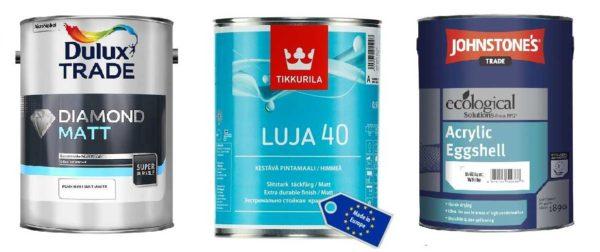
Even better is the case with washing walls coated with vandal-resistant or resistant paints. They can withstand several thousand wash cycles with detergent brushes (Johnstones Acrylic Durable Matt, Johnstones Anti-Mould Acrylic, Teknos Timantti 40, Novatic Feste Farbe, Novatic Innenlatex matt).
A little about the type of surface that is obtained after painting the walls. Stains are best washed off from glossy surfaces, the worst – from matte surfaces. Matte surface is obtained due to the inhomogeneous, porous structure. In these inhomogeneities clogs pollutant and wash it is more difficult (there are rare exceptions – DULUX Diamond Matt). Therefore, on the walls, which will have to wash often, it is better to use glossy, semi-glossy or at least semi-matte compositions.
Preparation of the base
Some acrylic, acrylate and latex paints have good hiding power, which can make small defects invisible. But, in general, good preparation is required – the walls are first plastered, then puttied and sanded until a perfectly flat plane is obtained. To obtain a reliable base on a layer of starter putty glued fiberglass cloth – spider web. It serves to reinforce the base. After the drying of glue on the “cobweb” walls are leveled with finishing putty and finally sanded.
Painting the walls in the kitchen with glossy or semi-glossy paints requires very even walls: gloss reveals even the most insignificant irregularities. To get a good result, pay maximum attention to this issue. All irregularities can be highlighted using an LED lamp. It makes all irregularities very clear.
To make the paint lie down evenly, the walls are primed. The composition is selected depending on the type of paint: latex paint needs its own primer, acrylic paint needs its own primer. This stage equalizes the absorbency of the base, which reduces the consumption of not cheap paint. In the surface covered with primer, it is absorbed in the same amount, you get a beautiful even coating.

Even if the painted wall is specially made uneven – brickwork or other similar relief surfaces – primer is desirable. It also improves adhesion to the base, the paint is better laid down, holds more firmly, does not peel off.
Escolha da cor
It is not easy to decide what color to paint the walls in the kitchen. The choice of colors and shades is very wide, many companies offer to tint the composition on company equipment in one of the RAL colors, which is more than 200 shades. In addition can be created special shades – metallic, add glitter, etc. If we take into account that painting the walls in the kitchen can be non-uniform – stripes, geometric and floral patterns, ornaments, paintings and any other ways of decorating the walls, the number of options tends to infinity. Nevertheless, to begin with, you need to choose the main color of the walls in the kitchen. When choosing a dominant color, there are two approaches:
- Paint the kitchen walls a dim “background” color. This will create a calm atmosphere, which, if desired, is made more dynamic with the help of a kitchen set and accessories of bright colors.
Walls painted in a neutral color – for a calm atmosphere - Make the walls bright. Color harmonize with the color of the kitchen facade, or it can be contrasting. It depends on the color of the kitchen facade and how bright you see your kitchen.
Cheerful colors – for a bright mood
When choosing a color, it is worth remembering its influence on the emotional state of a person. Red – the color of danger, accelerates the work of all systems of the body. Being in such a room for a long time is tiring. If you crave activity – you can choose it, or softer in its effect orange. If you need to relax, you need something calmer. For example, green color and its shades. It creates a calm atmosphere, and to not be so boring, you can add yellow. With it, green becomes more active.
Brown creates a sense of stability, but do not use too dark shades – it will be too gloomy. Black in its pure form suppresses, but as an “additive” to all motal makes the interior more dynamic. It is good in small doses.
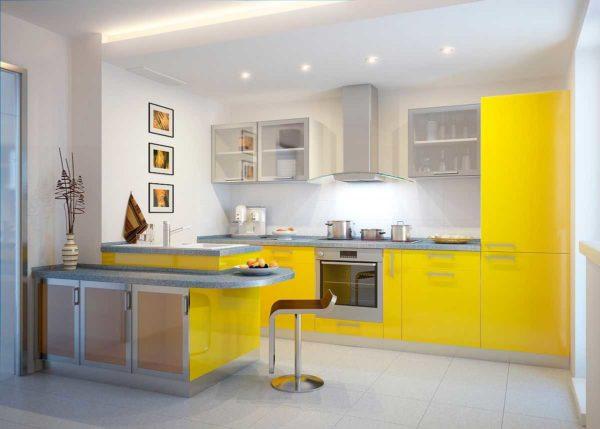
White, gray, beige – these are ideal “background” shades that allow you to highlight brighter interior items without overloading it. That is why painting the walls in the kitchen in these tones are used where the facades are decorated in juicy colors.
Technology of painting
The exact order of applying paint depends on the type of binder and the base, influences the effect you want to get. But there are general points:
- Before starting work, remove skirting boards, door trims, take out of the room everything that is possible.
- Cover all surfaces that can be stained. This is the window, doors, apron in the working area of the kitchen, the floor. For windows, doors and apron, it is easiest to use a polyethylene film, glued with painter’s tape. This coating can be easily removed without leaving any traces. On the floor you can also spread polyethylene, or you can use old wallpaper, newspapers, etc. They can be fixed with double-sided tape, preferably also painter’s tape (it does not leave traces of glue after peeling off).
- Paint is applied with a roller or brush. Usually two or three layers are required to obtain a uniform coloring. Each subsequent layer is applied after the previous one has dried. This time is specified in the technical characteristics of the composition as “time of tack drying”.
Tools for painting kitchen walls - When applying paint on a brush or roller, take a small amount of composition, evenly distribute it. It is easier to do this with the help of a paint tray, which has a special area for removing excess. Paint is applied maximally rolling it out in a thin layer. The most common mistake is the desire to paint everything with the first layer of paint. This is wrong and threatens the appearance of sweat – try to apply more paint. It is much more difficult to get rid of sweat than unpainted areas. You will have to wait until they dry completely, and then a fine emery cloth to remove the influxes. Therefore, it is better to apply the paint thinly, and all the imperfections will be covered by the next layer. The result will be an even deep color.
Painting the walls in the kitchen: paint is applied thinly - When using a roller, a brush is used to pass hard-to-reach places – corners, the joint of the ceiling and the wall, etc. After, with a roller, paint the rest of the space.
- To get a uniformly painted wall, layers of paint are applied in different directions – one layer – horizontally, another – vertically.
When painting the walls in the kitchen is over, do not rush to test how well washable your chosen paint. First, read the instructions carefully. Some of the compositions acquire their operational characteristics only after a month after application. So you should not be in a hurry.
All of the above is true for all types of paint – water-dispersion acrylic, latex. But, before starting work, carefully read the manufacturer’s recommendations. If there are different recommendations, it is necessary to fulfill them.
Options for painting kitchen walls – photo
Not so long ago there was a third trend – painting the walls in the kitchen in two colors. Companion colors are chosen. It can be shades of the same color – dark and light, can – contrasting or combined. If you want to pick up different colors, use the design tables of color combinations.
In any case, the most popular trend is to paint one wall in a different color. This allows you to clearly indicate the accents. In the kitchen, it is usually the wall near which the dining table stands, but not necessarily.
- Gray – background color and bright green – as an accent wall
- Contrasting colors – green and lilac in one kitchen
- Walls can be painted in the same color, but different shades
- One wall of the kitchen is painted in a different color
Striped walls in the kitchen
Another option is the application of stripes of a different color. More often – the stripes are vertical, which helps to visually “raise” the ceiling. They are usually of different widths, located at different distances from each other, but this is far from the canon. There are different variants. A few – in the picture below.
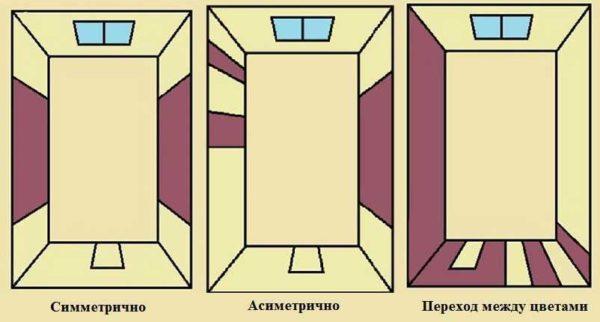
If you do not want motley, you can play with the texture of the colors. The combination of strips of glossy and matte paint of the same color give a very interesting effect. It is like a combination of velvet and satin. It looks very interesting.
If the strips are narrow, first paint the walls in the dominant color. After drying, stick strips of painter’s tape, which will serve as boundaries when painting in another color. After the second shade completely overlaps the first, the tape is removed, get clear boundaries without “transition”.
Ornaments and stencils
To paint the walls in the kitchen was not boring, it can be enlivened with a drawing, ornaments. With a drawing is more difficult to cope with – you need professional skills, and the application of ornaments on the walls may be easier than you think. With the use of stencils it is not difficult at all. They can be made independently from thick paper, pasted with scotch tape (so that it is easier to cut and not torn), and you can buy ready-made, cut out on a dense polyethylene film.
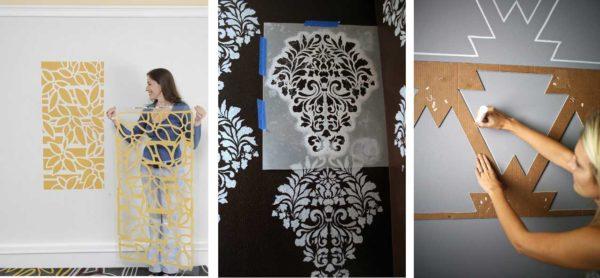
A suitable stencil is fixed on the wall. The easiest way to do this is with painter’s tape. Paint is applied with a regular sponge (you can use a kitchen sponge). On the sponge take a little paint, distribute it evenly over the entire surface (as a palette suitable plastic plate). With this “tool” paint the wall in the slots. Since there is not much paint, it dries quickly.
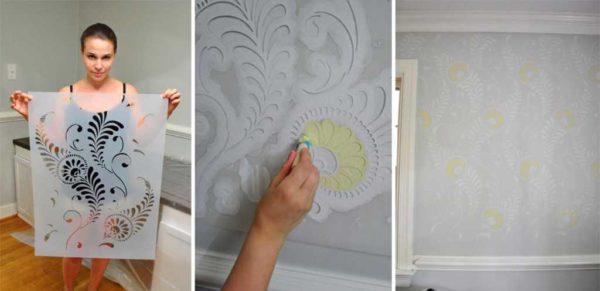
If you want to get a two-color ornament, the parts that will be painted in a different color glue with scotch tape (also painter’s). Apply the pattern with one color, wait until the paint dries. Cover these parts with tape and add the missing part with another color.
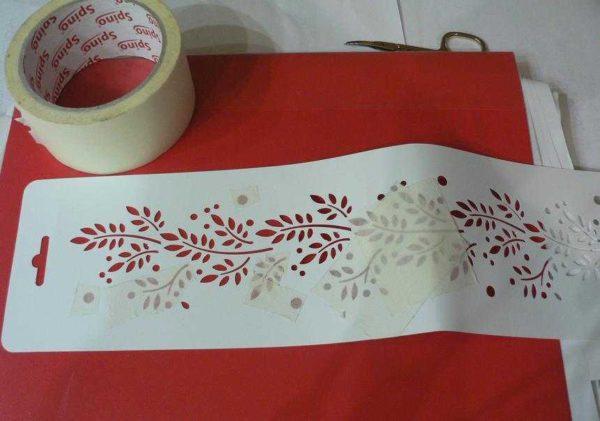
Find the right pattern for the kitchen can be found in the catalog of sites that sell ready-made stencils. There are a lot of them in different styles. You’re sure to find one you like best.

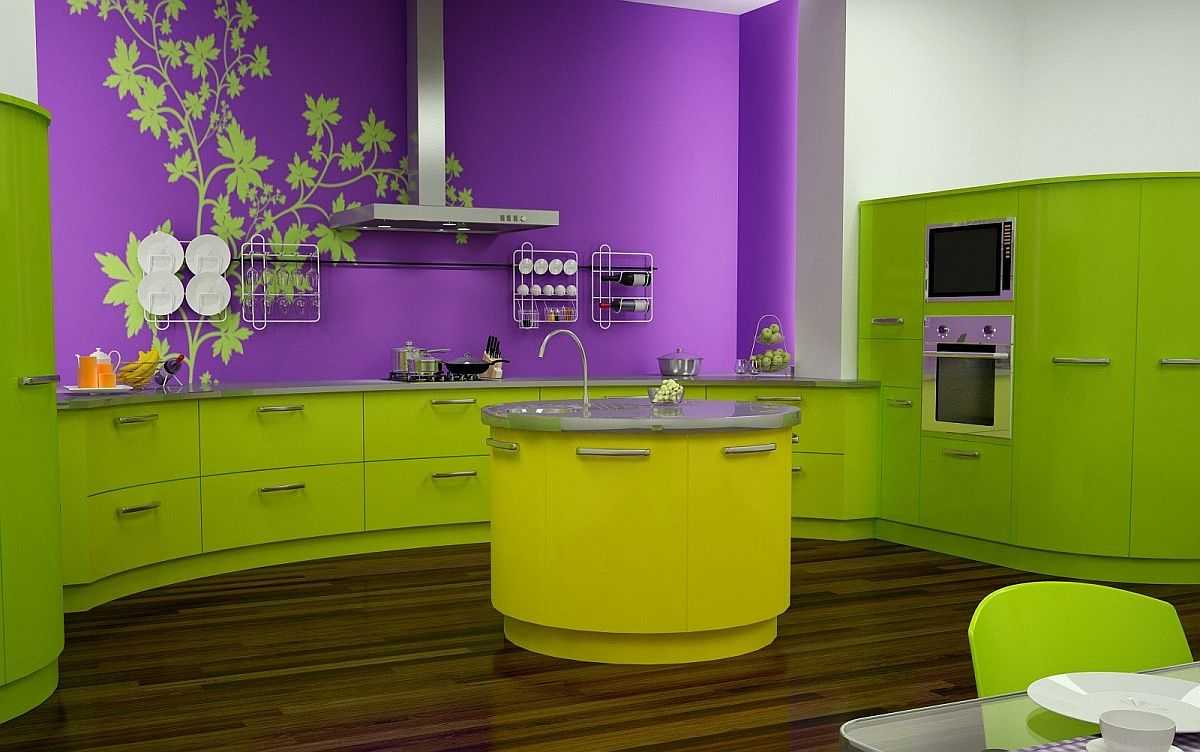
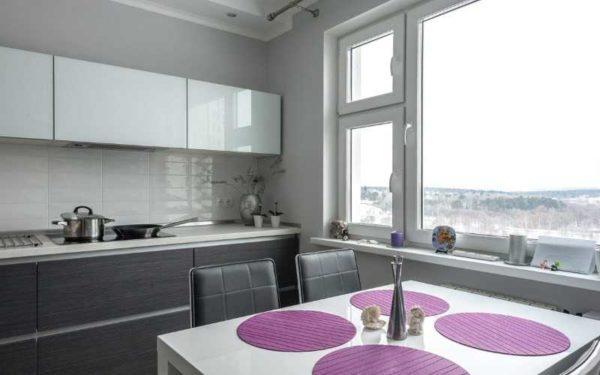
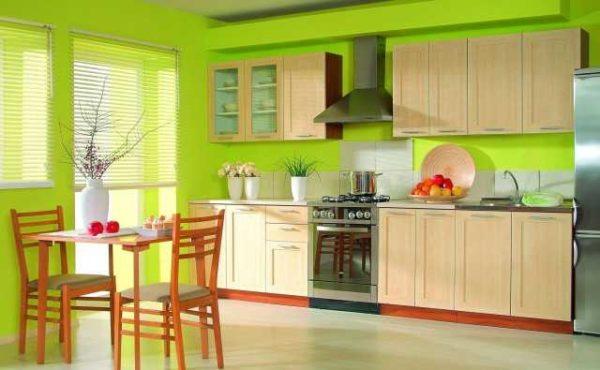
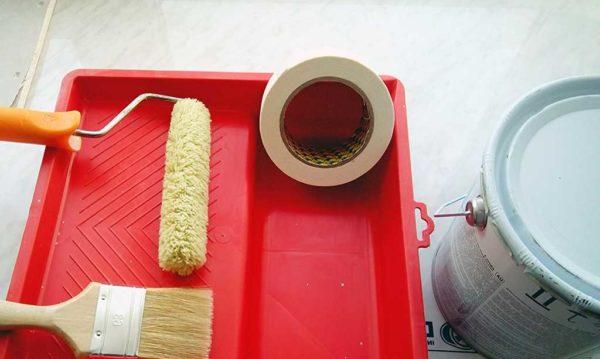
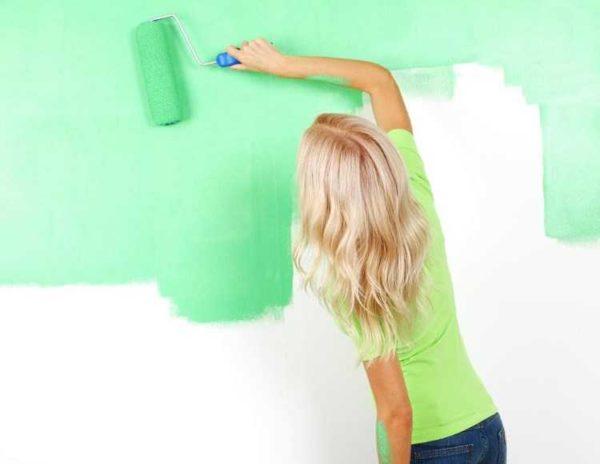
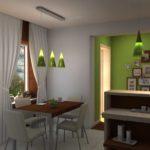
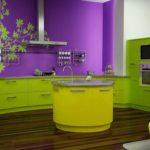
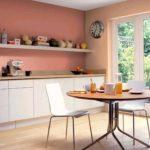
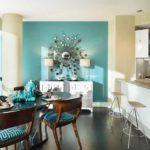
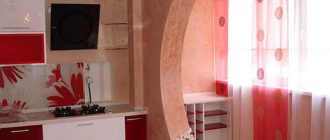
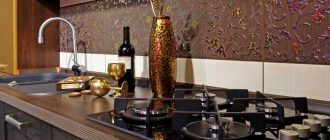
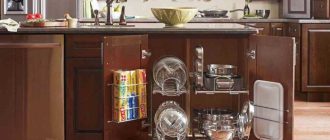
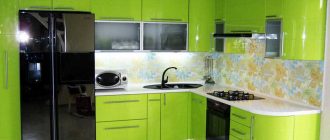
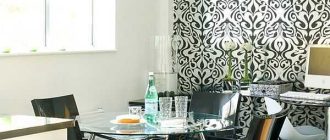
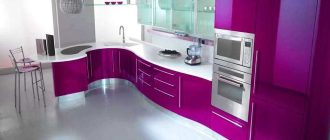
I once painted my kitchen a soft mint green, and it completely transformed the vibe! It feels fresh and inviting now. Plus, it brightens up my space, making cooking way more fun. Definitely go for a light color to keep it cheerful!